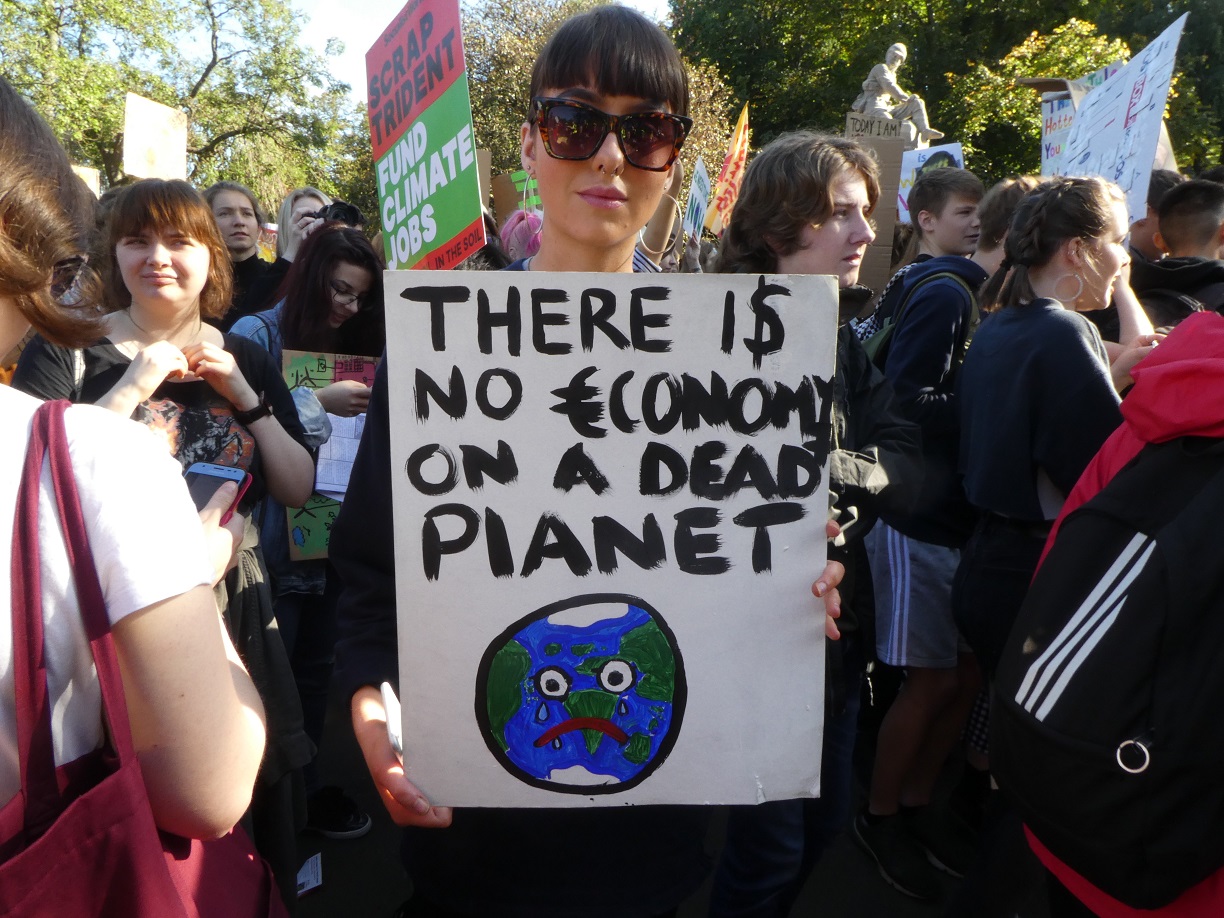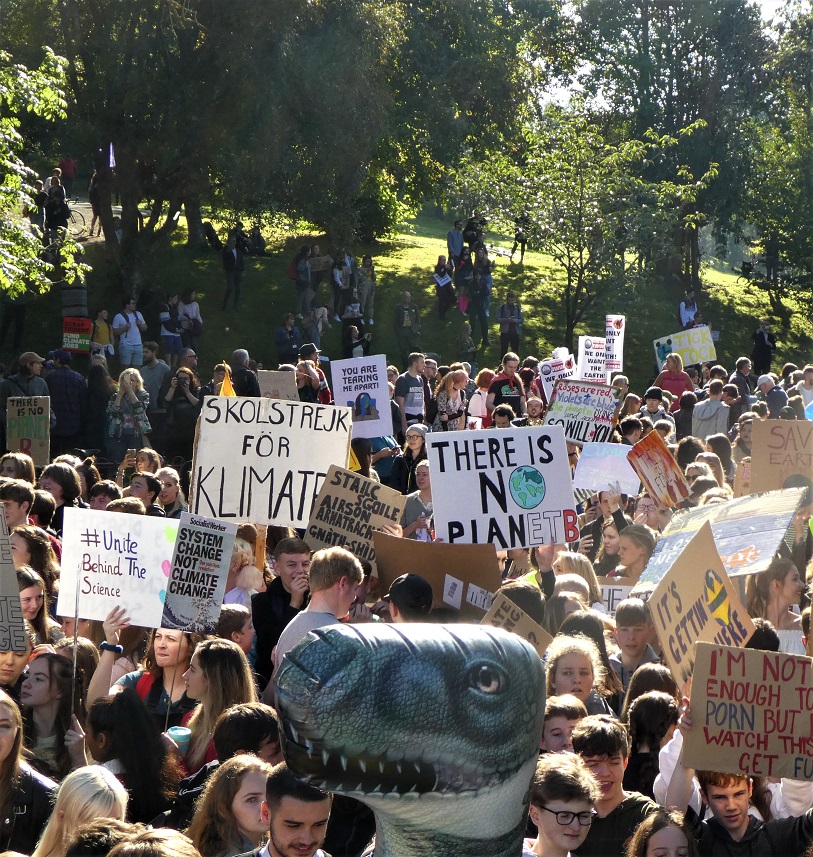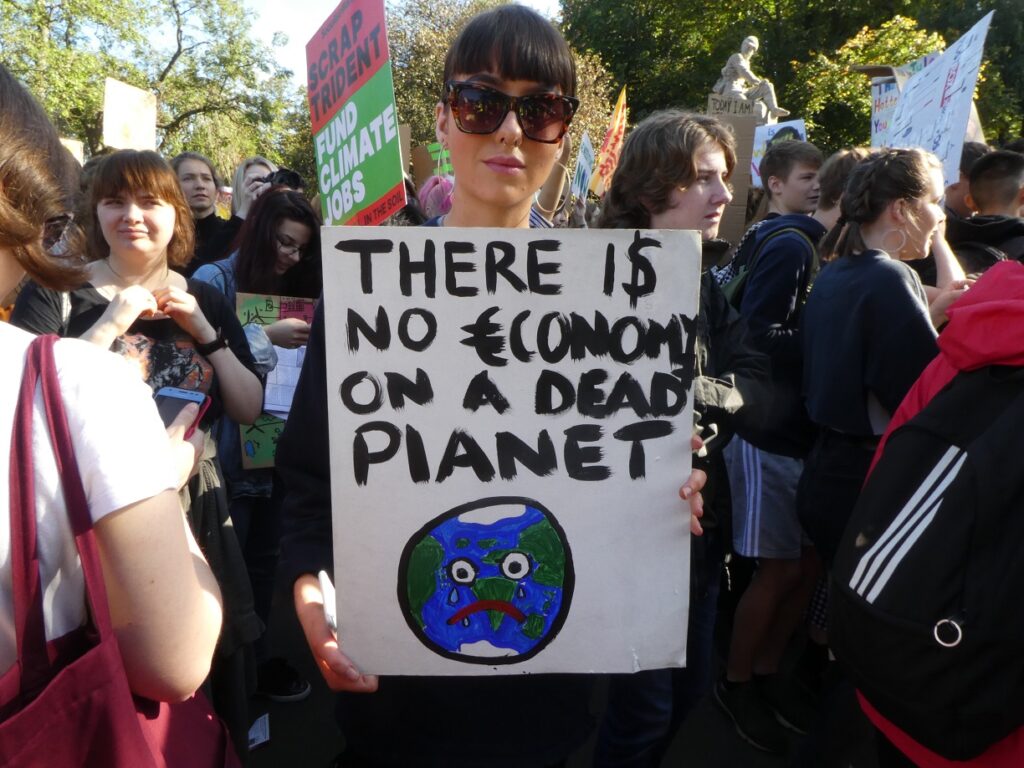A PYTHONESQUE image of three polar bears marooned on a melting iceberg and a half-submerged Duke of Wellington statue dominated one Scottish newspaper’s first front page of 2021 next to the headline: ‘There’s a lot riding on Glasgow.’
Scotland on Sunday’s dramatic splash drew its readers’ attention to the 26th United Nations Conference of the Parties (COP), the most important climate change summit since Paris six years ago. Almost 200 countries signed an accord at the end of the 2015 talks in the French capital and pledged to keep global temperatures to below two degrees Celsius compared to mid-18th century levels.
The rhetoric in the run up to November’s COP26 summit ratcheted up after new US President Joe Biden overturned his country’s removal from the Paris Agreement under his predecessor Donald Trump after taking office on January 20th.
His climate envoy John Kerry warned failure by countries to hammer out a stringent new emissions reduction agreement in Glasgow, following on from the disappointment of the Madrid COP25 summit in 2019 – when a deal couldn’t be reached on carbon market trading rules – ‘was not an option.’
The year 2030 marks the point set out by the Intergovernmental Panel on Climate Change’s (IPCC) as the year when global temperatures will reach 1.5C above pre-industrial levels.
Unless drastic action is taken over the next nine years melting Arctic and Antarctic ice caps will be more than a newspaper front page and will impact severely on marine eco-systems.
The Scottish Government’s new climate change legislation in 2018 committed the country to a reduction in emissions by 75% compared with 1990 levels and net-zero against this parameter by the year 2045.
Its latest Climate Change Plan to 2032 came out in December and prioritised green recovery from the COVID-19 pandemic, with the emphasis on creating new skills, balancing the need for growth with helping people working in traditional industries to re-equip for sustainable jobs in zero carbon energy and infrastructure and rebuilding communities previously reliant on high carbon-emitting or fossil fuel industries such as the North Sea and in Grangemouth.
Unless drastic action is taken over the next nine years melting Arctic and Antarctic ice caps will be more than a newspaper front page and will impact severely on marine eco-systems.
John Bynorth, EPS
Tens of millions of pounds in public and private sector initiatives (sometimes both at the same time) will be spent on developing hydrogen technologies for trains and buses, renewable energy, peatland restoration on our moors, electric passenger planes in a pilot project in the Highlands and Islands, CO2 carbon capture and the massive task of decarbonising heating systems in the homes and workplace.
One of biggest issues is how our vehicle-dominated towns and cities affect emissions. Before the pandemic, the way we moved around by private car, bus, taxis and other transport forms contributed to over a third of Scotland’s emissions. In 2018, private vehicles accounted for over 40% of transport sources.
COVID-19 has shown that people can live and work without their cars. During the first lockdown, there was a staggering 95% drop-off in car-use across Scotland. Home deliveries, which can also be polluting depending on the type of vehicle, soared as people worked from home.
The air quality consultancy Ricardo produced a study last year of seven locations. It found mean concentrations of NOx and NO2 – the pollutants most linked to road transport – fell by almost 70% and 80% respectively. In St John’s Road in Edinburgh, a 68% reduction was recorded for NO2 and 78% for NOx. Glasgow’s streets had a 65% reduction for NO2 and 76% for NOX
These showed what could be achieved to make towns and cities cleaner and more sustainable by cutting car use. By the time I returned to work in Glasgow, the road outside our office had been transformed into a temporary COVID-19 cycle lane – the result of a £30 million investment by Transport Scotland to encourage cycling and walking in support of social distancing.

This had a knock on effect for cycling with a 199% year-on-year rise in cycling in a new route alongside the River Clyde in Glasgow. In Dunfermline, there was a 215% upsurge in cycling compared to 2019 with Newton Mearns in East Renfrewhire enjoying a 121% swing in favour of cycling.
The safer infrastructure had reignited people’s love of cycling, and there’s no sign of it abating, potentially contributing to long-term cuts in air pollution. I believe independent cycle shops should be at the heart of the green recovery from COVID-19.
For October’s Clean Air Day, Environmental Protection Scotland surveyed dozens of independent cycling retailers, from the Isle of Skye to Edinburgh and Dumfries and Galloway to the Borders.
The responses, published here for the first time, showed a four-fold spike in the sales of bicycles of all types (including, children’s bikes and e-bikes and cargo bikes) between March and September 2020, compared to over the same period in 2019.
Graham Williams set his own firm, Empowering E-Bikes, to convert cycles into electric bikes from a workshop at his home in Aberdeenshire.
He said there had been a five-fold increase in queries about eBike conversions, kits, rentals and bike servicing and many customers had ‘given up’ on riding a bike before the pandemic. Sales of Graham’s battery conversions or kits, which allow people to convert their bikes themselves, rose from five in 2019 to 35 during the pandemic.

However, other independent retailers struggled to keep up with demand and one cycle shop owner accused the big retailers of ‘gobbling up’ supplies of popular bikes.
Although many family cycling shops stayed open during the latest lockdown, the Scottish Government should ensure funding is available for small cycle firms to be set up easily and cycle training courses reskill people who have lost their jobs as the pandemic obliterated our high streets.
The updated climate plan talks about innovation hubs to foster new skills such as the Michelin Innovation Park in Dundee.
If colleges across the country became involved, Scotland could have an army of trained cycle maintenance experts, working from shops and hubs helping the recovery of our battered high streets.
These skills would drive a sustainable and low-carbon future away from private vehicles and build better health and well-being among society.
- John Bynorth is Policy and Communications Officer at Environmental Protection Scotland, which coordinates Clean Air Day on behalf of the Scottish Government. The charity aims to bring individuals and organisations together across the public, private and voluntary sector to develop knowledge, ideas and solutions to create a cleaner, quieter, healthier and sustainable Scotland. To register an interest in their upcoming webinars visit the ep.scotland website here.

PICTURE CREDITS: John Bynorth

